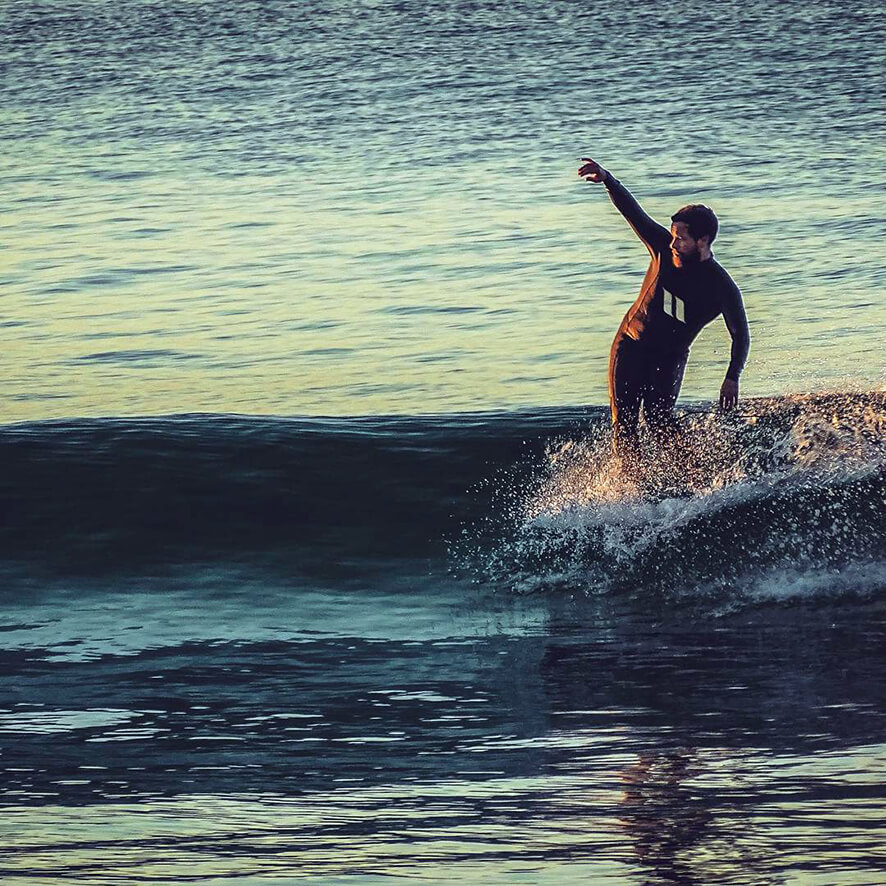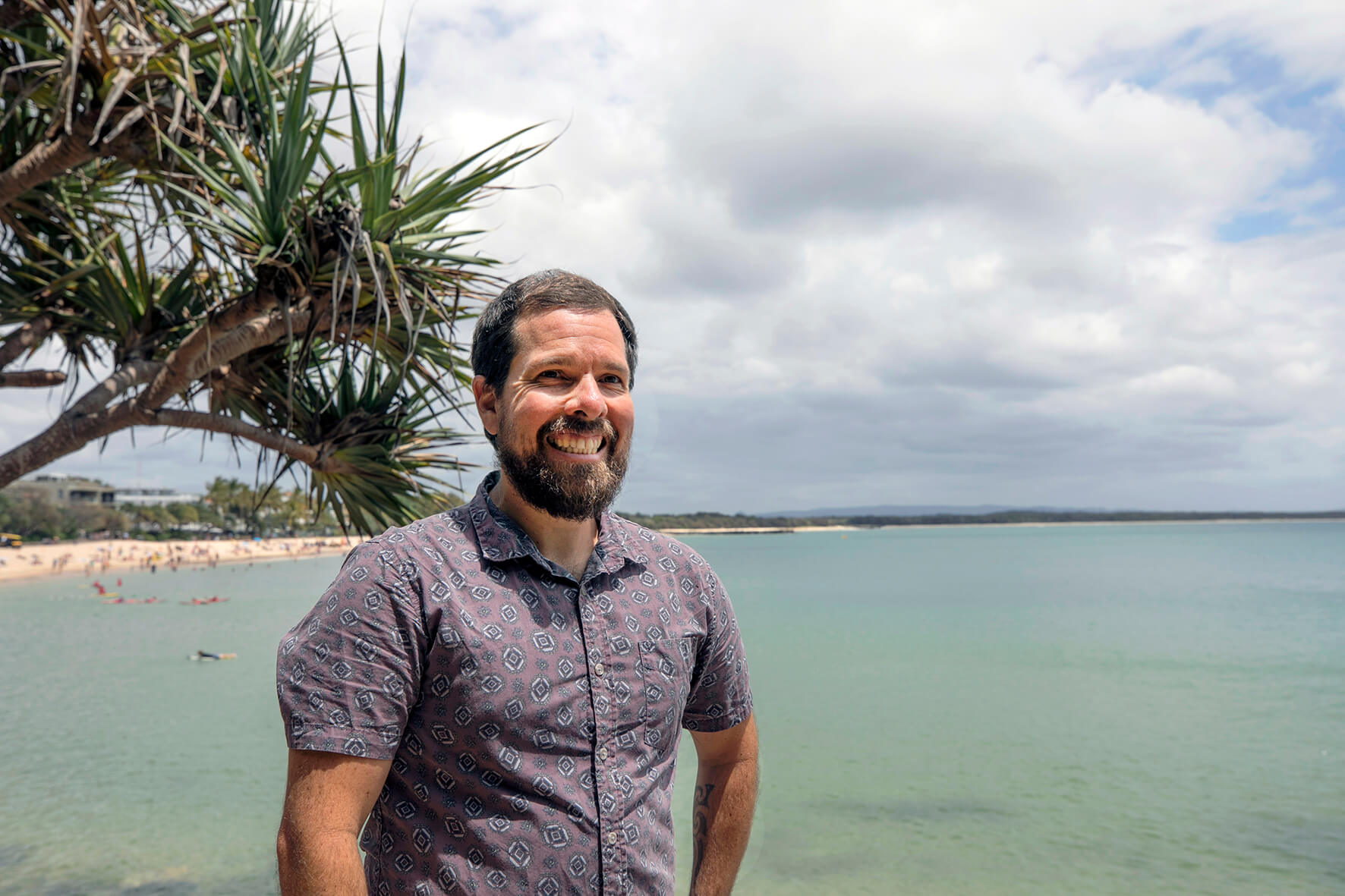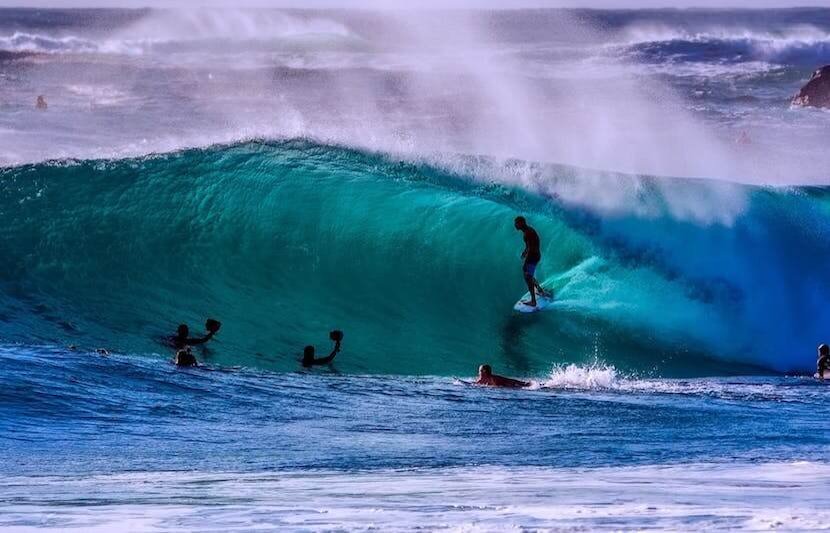As tides rise, surfers brace themselves. At the right moment, holding fast to their boards, they rise, riding on the waves. Rising and falling together, surfers and the waves become one.
Having grown up in Peru and now living in Noosa, Australia, Javier Leon, a professor of physical geography in the University of the Sunshine Coast and a surfer himself, loves riding the great waves around Noosa.

But recently, he’s seen some alarming attempts to possibly forever change this beloved place for many surfers around the world. So, he decided to save the waves with a class.
Starting next summer, USC will offer a new geography course on the science of surfing, including ideal wave characteristics and tourism benefits of surfing.
“The Sunshine Coast has been a very influential place for surfing. Currently, surfing culture plays a major role in shaping the region’s environment, economy and day-to-day lifestyle,” said Leon.
“However, as coastal population grows and climate changes, we are also starting to see threats impacting surfing amenity and culture. There is a big gap in the way we understand this from an academic perspective, so the course provides students with the appropriate tools to try and answer some of these questions.”
Playing the money game on waves
With all popular surf destinations, there is an unfortunate pattern.
A few surfers discover an amazing surf spot. Famous surfers try it out. The word gets out. Tourists pour in. Local businesses boom. Big businesses step in, building condos and resorts worth millions of dollars. Construction residue buries a reef that creates waves. Wave quality goes down. Tourists flock to different beaches. Businesses close down. Just seagulls left to hover for bread crumbs.
To break this pattern, environmentalist have long cried out that nature is priceless. However, their argument was too idealistic, unable to persuade even the locals to fight off companies bulldozing in in the name of urban development.
It was time to break money with money.
First coined by Neil Lazarow, a senior researcher at the Commonwealth Scientific and Industrial Research Organization (CSIRO), Australia’s national science agency, “surfonomics” is a field of study that quantifies the monetary value of waves in terms of their value to surfers and businesses to ultimately preserve the waves.
“Quantifying the monetary value of surfing is a challenging but important step, as it provides numbers that can be used to better understand and manage surfing,” said Leon.
“For example, by determining how many dollars surfing brings to a place, a better case for the conservation of surfing waves can be made against other activities such as urban development.”
Surfonomics 101
In the newly launched class, called the Geography of Surfing, students will learn everything about surfonomics, from its very basics to application.
They will be in class, but also, or even more so, out at the beach. It’s literally class at the beach.
Using drones and GPS devices, students will measure waves along the iconic Noosa point breaks that have been recognized as a World Surfing Reserve.

They will conduct surveys on where surfers are coming from and how much money they spend locally.
“We are engaging with local community groups to continue collecting data between course offerings, so we can monitor how wave characteristics change and how that relates and impacts surfing amenity and the local surfing culture,” said Leon.
Students will use the collected data to put a price tag on the waves and to help local businesses better understand the economic benefits of surfing to them.
“By the end of it, we’ll be able to answer questions such as what makes the waves around Noosa so great from a physical perspective,” Leon said in a statement.
“But we also want to know who surfs the waves, and why they surf them, and how much money are they spending, and what it means for surfing culture in general.”
Students will meet and learn from surfing legends, such as Phil Jarratt, a former surf magazine editor and founder of Noosa Festival of Surfing, and Tom Wegener, Noosa’s master surfboard shaper who completed a doctorate on surfboard sustainability through USC.
They will also learn about impacts of climate change and emerging wave pool technology, and discuss possible impacts of having surfing included as a sport in the upcoming Tokyo Olympic Games.
“There’s already evidence that wave climate is going to change on the east coast,” Leon said in a statement.
“For example, southern swells, which push all the sand up the coast, are going to weaken – there’s already scientific studies to show that. We want to understand if there are threats to the wave quality.”
A class for everyone
Students studying environmental science, management and tourism degrees will find the course related.
However, the course welcomes even beginners, who know nothing about surfing or any of the above subjects.
“Actually, people who know nothing about surfing will probably enjoy the course the most as they will be learning so many new things, from how a surfing wave is formed to how surfboards can be constructed using more sustainable approaches,” said Leon.
Currently, it’s the only subject of its kind in Australia — and one of only a few in the world. Leon hopes to see the course grow and spread.
“We already are talking with colleagues at other universities and planning on delivering the course in other countries, like my home country Peru, which have a rich surfing history and culture,” said Leon.



